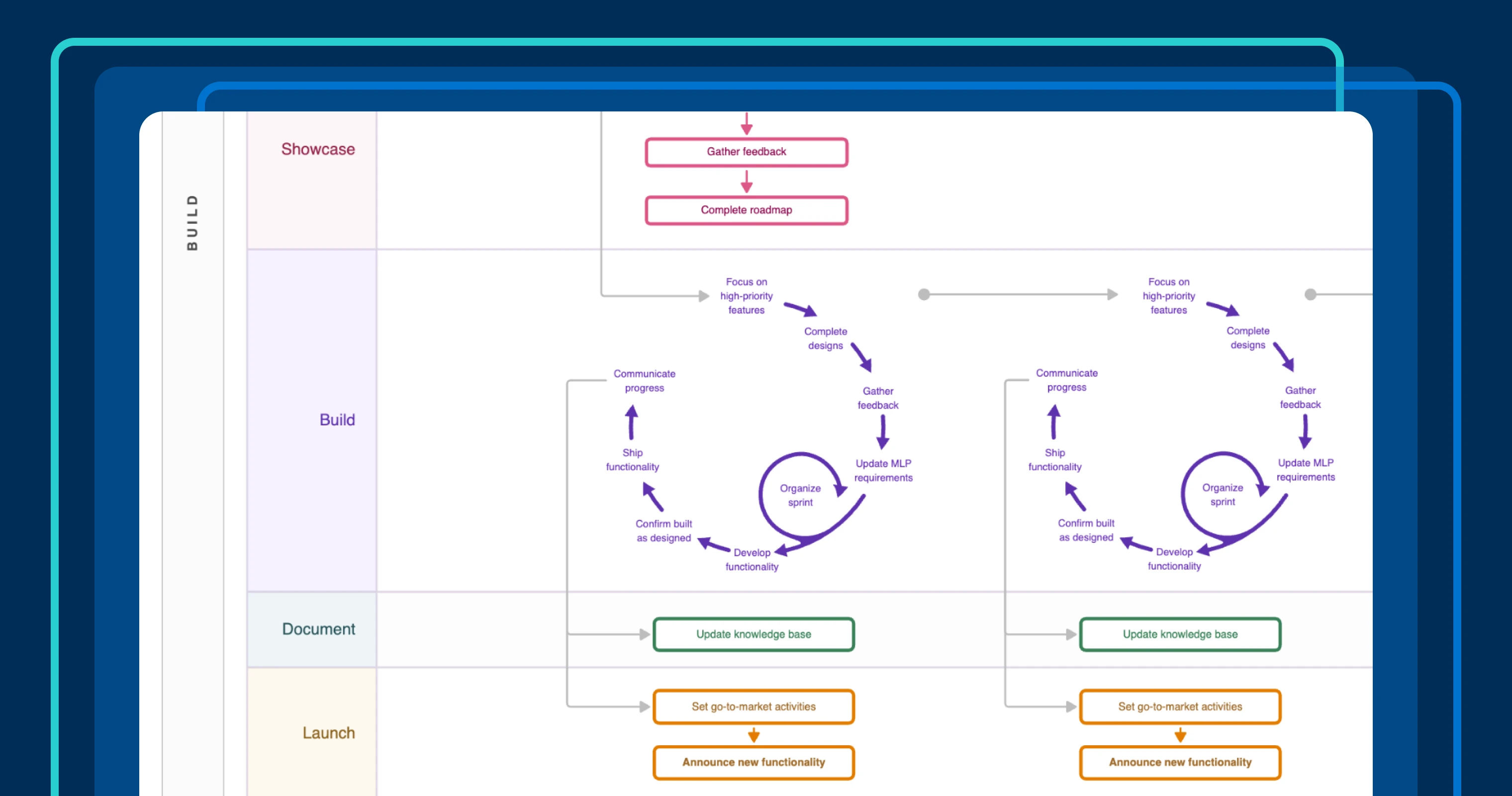
Aha! teammates breaking a sweat at a recent onsite. | Photo by Jodi B Photography
Strategy should not be so hard
A strategy for trash? Or maybe a trash strategy. I recently read an article about how New York City commissioned McKinsey to complete a $4 million analysis of how to handle refuse. The consulting firm's strategic recommendation, after two years of study compiled in a 95-page presentation, was that the city should pursue "containerization." They suggested that trash should be thrown away in what most of us know as "trash cans."
Strategy is hard. But it is also not so hard, as any New Yorker probably could have told you for far less than $4 million dollars.
Strategy requires deep focus. Yet you still have to complete ongoing work and deal with the pressing needs of today. For those of us who work in product, that tension is omnipresent. You need a way to do regular strategic planning while continuously releasing new functionality to customers — which is how we organized The Aha! Framework for product development.
But not all organizations have this rigor. This is why product folks have heard from a boss at some point that they are "too in the weeds" or "not thinking like a senior product leader." Both are coded language for not being strategic enough. And maybe some of that feedback is rooted in reality. Because strategy hinges on a strong point of view, which requires you to be bold and to be right.
Things get mushy when people do not want to be wrong. So we waffle on the way forward, which leads to murky assumptions that are firmly held to avoid looking uncertain. You can see the irony.
The team ends up working based on organizational priorities that were not driven by a well-considered point of view, but by whims. In these situations, people feel that strategy is more than just hard — they feel it has failed because they never had a clear set of goals or corresponding initiatives.
As we are in the thick of strategic planning at Aha! right now for 2025, I took some time to define good and bad strategy for myself:
Good strategy is not …
Overly obvious: Do not settle for the first insight; engage in deep thought and reflection.
Overly complicated: The best strategy is extremely simple (which is extremely difficult).
Overly tactical: Think of strategy as high-level scaffolding for success, not a design for the full building.
Good strategy does ...
Assess where you are: Provide a quality analysis of your market, customers, product, and your operations.
Honor current reality: Consider assumptions about known knowns, known unknowns, unknown unknowns, and everything in between.
Stretch the future: This is your vision, the aspirational place where you want to be.
Reveal the value it may create: Be brutally honest about what you think is possible.
And good strategy must ...
Have a strong point of view: There is a logical storyline that others can follow.
Define what is next: This is your mission, how you are going to move forward.
Set bright guideposts: Establish the goals that will drive the team and the work.
Push past the comfort zone: It should make you somewhat uncomfortable.
Inspire people to achieve: Motivate both those you work with and those you serve.
Strategy is not a list of hunches, priorities, or tactics. Toss those in the trash. You want a plan to win — where you will play and how you will succeed.
Having that strong point of view based on real study and understanding (and being right most of the time) is not exactly easy. The unpredictability and instability of the last few years has compounded both the difficulties and importance of setting strategy.
So my advice to folks who are waffling or feeling daunted is to focus on what good strategy is and what it is not. Then spend your time cultivating what will get you to good — deep curiosity, awareness of facts and emotions, and the ability to criticize your early ideas and change direction when needed.
Strategy is not so hard. It is incredibly rewarding. It is your guide for what you will do and what you will not do in relation to whatever you are working on — whether it is a new product, new company, or a new direction. You do need unique insights and the ability to set clear goals and deliver results. Both take time and effort.
Now, not having a strategy is absolutely a strategy. But it is much harder than setting a thoughtful plan and nearly guarantees results that will not bring you pride.
Link strategy to plans with the Aha! software suite — try it free for 30 days.




